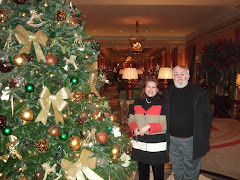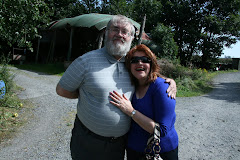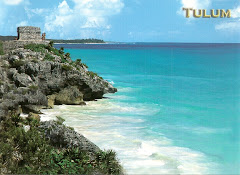Just how wise were those three wise men? If they had only been more discreet when they spoke to King Herod, he might never have ordered that terrible slaughter of the innocents. It can't have been comforting for Jesus to know that so many babies died just so that he could be the only child with a divine pedigree. Mind you, as all the others were killed, it ruled out any possibility that the magi had picked the wrong kid. As we know, Christmas has pagan roots. When Christianity became the official religion of the Roman empire, it incorporated several ancient festivals and pagan traditions.
* Saturnalia
The customs of gift-giving, indulgent feasting and having fun comes from this Roman festival Saturnalia - which was celebrated around 17th of December. Saturn, to whom the festival was dedicated, was the Roman God of agriculture and plenty. Presents symbolised the redistribuion of wealth from rich to poor during the season of greatest hardship and the rich would lay on big feasts to feed their poorer neighbours.
* Mithras
The ancient festival to mark the solstice on 25th of December was to celebrate Mithras, the Roman God of Light. Traditionally the festival marked the renewal of hope and is believed to have been taken up by Christians as the birthday of Jesus around the fourth century.
* New Year's Eve
Decorating the home with greenery is today seen as a Christmas tradition, but originated from the Roman celebration for New Year's Eve. Dedicated to the two-faced God Janus (who looked both forward and backward ) Romans would have torch-lit processions, sing songs, have their fortunes told, give presents and decorate their homes with greenery to symbolise new life. Other ways of celebrating Christmas were adopted more recently. and were once peculiar to northern Europe. Typical of these, is the Yule log, which is believed to have arrived in Britain only in the 17th century. One theory is that it originated in the Germanic paganism that was practiced across northern Europe before Christianity; others argue it came from Anglo-Saxon paganism,
practiced in England in early medieval times. The Yule Log was seen as a protective amulet and also a source of rivalry between neighbours.
Thursday, 24 December 2009
Tuesday, 8 December 2009
Leonardo's Codices
Leonardo da Vinci is one of the outstanding figures of the Rennaissance and of all time. An entirely self-taught intellectual giant, he was endlessly curious about the physical world.
His amazing notebooks reveal the breadth of his research into areas as diverse as anatomy, architecture, botany, geometry, engineering, mathematics physics, painting, including his extraordinarily understanding of what the future would bring like robots, airplanes in anticipation of modern technology.
During his life, Leonardo produced thousands of pages of notes, sketches and designs 'about anatomy and other interesting things ' (extract from a letter of an agent for the Duke of Ferrara) these pages are called codices, manuscript pages that are bound together in a book form. However, Leonardo's manuscripts were not always grouped together in this way.
Although Leonardo had organized his papers prior to his bequest to his student, Francesco Melzi, the manuscripts have unfortunately not been maintained in that manner. Melzi's heirs were terrible curators. Individual pages were sold chaply to collectors. Folios were re-arranged and separated. The individual that did the most damage was a sculptor from the court of King Phillip IV of Spain. His name was Pompeo Leoni. In an attempt to sort artistic drawings from technical drawings, he disassembled, re-organized, rebound and in some cases completely lost many of Leonardo's papers.
Amazingly, some of the documents were so completely lost, that they weren't found again until 1966 ! What a year that was for the National Library of Madrid ! They found two bound manuscripts, which are now referred to as 'Madrid I and Madrid II ' At present, approximately 5,000 pages are accounted for, in various museums and libraries. I will mention a brief resume of a few of the 20 Leonardo's Codices. For me, the most startling is the CODEX ATLANTICUS. This is the largest collection of Leonardo's manuscripts that has ever been assembled in a series of 12 leather bound books. Within this collection, you can find some of his designs for automatons or robots. Of particular interest, are the pages on gliders and flying machines. Most of Leonardo's aereal machines were designed after he studied birds. In his notes he recorded, " The bird is an instrument functioning according to mathematical laws, and man has the power to reproduce an instrument like this, with all its movements". There is written evidence in this codice, that Leonardo may have flown one of his gliders when he wrote:
" When once you have tasted flight, you will forever walk the earth with your eyes turned skyward, for there you have been, and there, you will always long to return '
Leonardo built a working model of one of his flying machines and on January 2, 1496, he recorded in his notes that he was going to attempt to fly it the next day. It is unknown whether he did try it or not, but judging by what he later wrote on a note to himself to try any more flying experiments over a lake where he would be less likely to be injured in a landing. Suggests that maybe he came down with a painful thump on the ground as later on this same Codice Atlanticus he has drawn a design for a parachute which might have been conceived to allow for the safe escape of ny pilot from a flying device.
This Atlanticus Codice also includes studies for some of his paintings like The Battle of Anghiari of which we talked about earlier and where recently, an Italian professor has claimed that this painting is behind Vasari's other battle painting.
THE CODEX FORSTER
One fascinating element of this Codex is information that lead Prof. Alessandro Vezzosi, director of the Museo ideale of Vinci, to discover that Leonardo had developed one of the original synthethic plastics. The material was organic, non-toxic and unbreakable. Prof. Vezzosi has recreated the materials based on notes from this Forster Codex. The Forster manuscripts were lost for a number of years. When they resurfaced at the end of the 19th Century, they were purchased by Earl Edward George Lytton, and subsequently inherited by John Forster and it was finally bequeathed to the Victoria and Albert Museum in 1876 and it remains there to this day.
THE MADRID CODICES
There are two. One and Two, which are bound in red Moroccan leather and these codices are an engineer's delight, full of widgets, gadgets, gears, and inventions, dated between 1490 - 1496. Madrid II, is primarily a treatise on Geometry, and was written by Leonardo between 1503- 1505. Although these manuscripts thought to be lost, they resurfaced in 1966. The manuscript now resides at the National Library in Madrid.
CODEX ARUNDEL
This codex aludes to the properties of water and it even has a description and a drawing of a pre-historic sea-monster. This codex is only rivaled in size and scope only by the Codex Atlanticus, since it covers Art, science, and technology in addition to studies in geometry, weights and architectural projects for the Royal residence of the King of France. It currently resides in the British Museum.
CODEX LEICESTER
It was purchased by Bill Gates for $30.8 million. This manuscript dates from 1506-1510, it covers a wide varity of topics. It only has 72 pages and this is the only manuscript that's in private hands. So we cannot see it.
His amazing notebooks reveal the breadth of his research into areas as diverse as anatomy, architecture, botany, geometry, engineering, mathematics physics, painting, including his extraordinarily understanding of what the future would bring like robots, airplanes in anticipation of modern technology.
During his life, Leonardo produced thousands of pages of notes, sketches and designs 'about anatomy and other interesting things ' (extract from a letter of an agent for the Duke of Ferrara) these pages are called codices, manuscript pages that are bound together in a book form. However, Leonardo's manuscripts were not always grouped together in this way.
Although Leonardo had organized his papers prior to his bequest to his student, Francesco Melzi, the manuscripts have unfortunately not been maintained in that manner. Melzi's heirs were terrible curators. Individual pages were sold chaply to collectors. Folios were re-arranged and separated. The individual that did the most damage was a sculptor from the court of King Phillip IV of Spain. His name was Pompeo Leoni. In an attempt to sort artistic drawings from technical drawings, he disassembled, re-organized, rebound and in some cases completely lost many of Leonardo's papers.
Amazingly, some of the documents were so completely lost, that they weren't found again until 1966 ! What a year that was for the National Library of Madrid ! They found two bound manuscripts, which are now referred to as 'Madrid I and Madrid II ' At present, approximately 5,000 pages are accounted for, in various museums and libraries. I will mention a brief resume of a few of the 20 Leonardo's Codices. For me, the most startling is the CODEX ATLANTICUS. This is the largest collection of Leonardo's manuscripts that has ever been assembled in a series of 12 leather bound books. Within this collection, you can find some of his designs for automatons or robots. Of particular interest, are the pages on gliders and flying machines. Most of Leonardo's aereal machines were designed after he studied birds. In his notes he recorded, " The bird is an instrument functioning according to mathematical laws, and man has the power to reproduce an instrument like this, with all its movements". There is written evidence in this codice, that Leonardo may have flown one of his gliders when he wrote:
" When once you have tasted flight, you will forever walk the earth with your eyes turned skyward, for there you have been, and there, you will always long to return '
Leonardo built a working model of one of his flying machines and on January 2, 1496, he recorded in his notes that he was going to attempt to fly it the next day. It is unknown whether he did try it or not, but judging by what he later wrote on a note to himself to try any more flying experiments over a lake where he would be less likely to be injured in a landing. Suggests that maybe he came down with a painful thump on the ground as later on this same Codice Atlanticus he has drawn a design for a parachute which might have been conceived to allow for the safe escape of ny pilot from a flying device.
This Atlanticus Codice also includes studies for some of his paintings like The Battle of Anghiari of which we talked about earlier and where recently, an Italian professor has claimed that this painting is behind Vasari's other battle painting.
THE CODEX FORSTER
One fascinating element of this Codex is information that lead Prof. Alessandro Vezzosi, director of the Museo ideale of Vinci, to discover that Leonardo had developed one of the original synthethic plastics. The material was organic, non-toxic and unbreakable. Prof. Vezzosi has recreated the materials based on notes from this Forster Codex. The Forster manuscripts were lost for a number of years. When they resurfaced at the end of the 19th Century, they were purchased by Earl Edward George Lytton, and subsequently inherited by John Forster and it was finally bequeathed to the Victoria and Albert Museum in 1876 and it remains there to this day.
THE MADRID CODICES
There are two. One and Two, which are bound in red Moroccan leather and these codices are an engineer's delight, full of widgets, gadgets, gears, and inventions, dated between 1490 - 1496. Madrid II, is primarily a treatise on Geometry, and was written by Leonardo between 1503- 1505. Although these manuscripts thought to be lost, they resurfaced in 1966. The manuscript now resides at the National Library in Madrid.
CODEX ARUNDEL
This codex aludes to the properties of water and it even has a description and a drawing of a pre-historic sea-monster. This codex is only rivaled in size and scope only by the Codex Atlanticus, since it covers Art, science, and technology in addition to studies in geometry, weights and architectural projects for the Royal residence of the King of France. It currently resides in the British Museum.
CODEX LEICESTER
It was purchased by Bill Gates for $30.8 million. This manuscript dates from 1506-1510, it covers a wide varity of topics. It only has 72 pages and this is the only manuscript that's in private hands. So we cannot see it.
Subscribe to:
Comments (Atom)
































































.jpg)
.jpg)









































